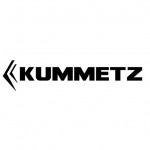When Realtors® violate the National Association of Realtors® ethics codes, notes Arthur van der Vant, they are subject to arbitration hearings. Once an arbitration request is initiated it goes through several steps prior to a final resolution. A commercial real estate expert, Receiver and Assignee in Illinois, Arthur van der Vant spoke with Interviewing Experts recently about his take on defects in NAR’s Arbitration process. Arthur van der Vant is widely respected in the field and has written extensively about many related topics.
Interviewing Experts: Thank you, Arthur van der Vant, for speaking with us this evening.
Arthur van der Vant: It is my pleasure.
Interviewing Experts: We understand that you believe there are several serious problems with the National Association of Realtors’ (NAR) arbitration program. Can we take a closer look?
Arthur van der Vant: The National Association of Realtors (NAR) is made of State REALTOR Associations, and the State REALTOR Associations are made of Local REALTOR Associations also called Real Estate Boards.
Interviewing Experts: Which are in turn made of individual real estate practitioners?
Arthur van der Vant: Yes. Only individual practitioners are allowed to use the designation of a REALTOR. Only individuals can become members of the Local, State, and National Association of REALTORS.
Interviewing Experts: Companies are not allowed to be members, only individuals are, is that correct?
Arthur van der Vant: Yes, that’s right. However, real estate transactions that could become a subject of a dispute are not between individuals (members), but they are between real estate companies they work for (non-members). If those companies are not NAR members, because only individuals can be members, than NAR can not bound companies to arbitration. No arbitration agreement exists.
Interviewing Experts: What has NAR done in its attempt to arbitrate disputed matters between members?
Arthur van der Vant: The National Association of REALTORS (NAR) has adopted a Code of Ethics and Arbitration Manual.
Interviewing Experts: Which all State and Local Associations (Boards) have adopted and follow?
Arthur van der Vant: That’s right. In order for an individual REALTOR to become a member of the association such a person has to agree to abide by the association’s Bylaws. The association’s Bylaws stipulate that all disputes must be arbitrated through and in accordance with National Association of REALTORS Code of Ethics and Arbitration Manual.
Interviewing Experts: So, you are saying that no other written and explicit Arbitration Agreement exists that would bind parties to arbitration?
Arthur van der Vant: Yes, and that is only a beginning of many problems!
Interviewing Experts: For Instance?
Arthur van der Vant: Well, NAR arbitrations are conducted between the wrong parties (individuals). As I stated before, individuals only work for real estate brokerage corporations, and it is those companies who should be parties to arbitration, not the individual REALTORS. Laws of all states clearly recognize the difference between a corporate entity and an individual.
Interviewing Experts: You mentioned previously that companies cannot be a member. Is that a problem?
Arthur van der Vant: Yes, since companies are not members as a corporate entity they have not joined the Realtor Board; therefore, they are not bound by arbitration clause buried in the Bylaws of the Realtor Association. In that setting arbitration agreement does not exist.
Interviewing Experts: Is that a problem?
Arthur van der Vant: Yes. The law undoubtedly recognizes that an arbitration agreement must exist in order for arbitration to be binding. In my opinion the National Association of Realtors (NAR) fails to provide adequate and necessary facilities and services to members in arbitration.
Interviewing Experts: Membership in Local Board of Realtors has been recognized by the courts as a valuable property right, is that correct?
Arthur van der Vant: Yes, therefore, any action by a Realtor Board limiting or denying the right and privileges of a member must be justified, not only substantively but also procedurally.
Interviewing Experts: So, who is the arbitrator in NAR arbitration?
Arthur van der Vant: NAR arbitrations are conducted and awards are entered by member REALTORS. They are usually unqualified and have no knowledge of the state laws and regulations.
Interviewing Experts: We have heard that NAR arbitrations appeals, called Procedural Reviews, are conducted covertly, in secrecy, and without participant’s ability to record them or to have a Court Reporter present. That doesn’t sound very professional.
Arthur van der Vant: Correct. The NAR Procedural Reviews and the arbitration hearings are both defective because they do not name proper parties, arbitration proceedings are conducted without arbitration agreement, and awards are entered by unqualified individuals who are not familiar with the state law and regulations. Procedural Reviews are concealed in secrecy and the parties are prohibited from using any recording devices or to have a Court Reporter present. I encourage your readers to research this subject and to familiarize themselves with the Arbitration Act in their State and any arbitration regulations.
Interviewing Experts: That certainly sounds like great advice.
Arthur van der Vant: Thank you.
Interviewing Experts: That is all the time we have for today. Thank you again.
Arthur van der Vant: You are very welcome. Thank you for the opportunity to speak with your readers.
The data contained in this publication is for information purpose only. The accuracy of the data contained herein is deemed reliable, but is not guarantied. The author and/or publisher do not engage in rendering legal, accounting, or any other professional advice, and suggests that the services of a professional in those fields should be sought. Any liability, loss, or risk, personal, or otherwise incurred as a result of using any of the information herein stated is not the responsibility of the author and/or publisher.

